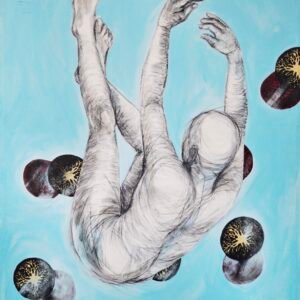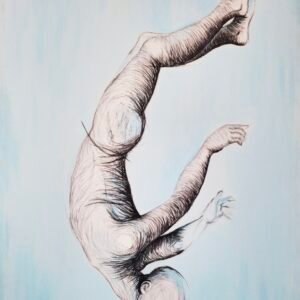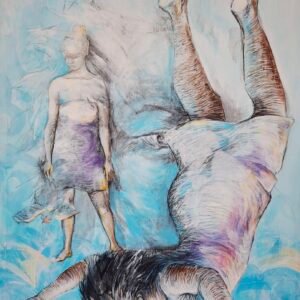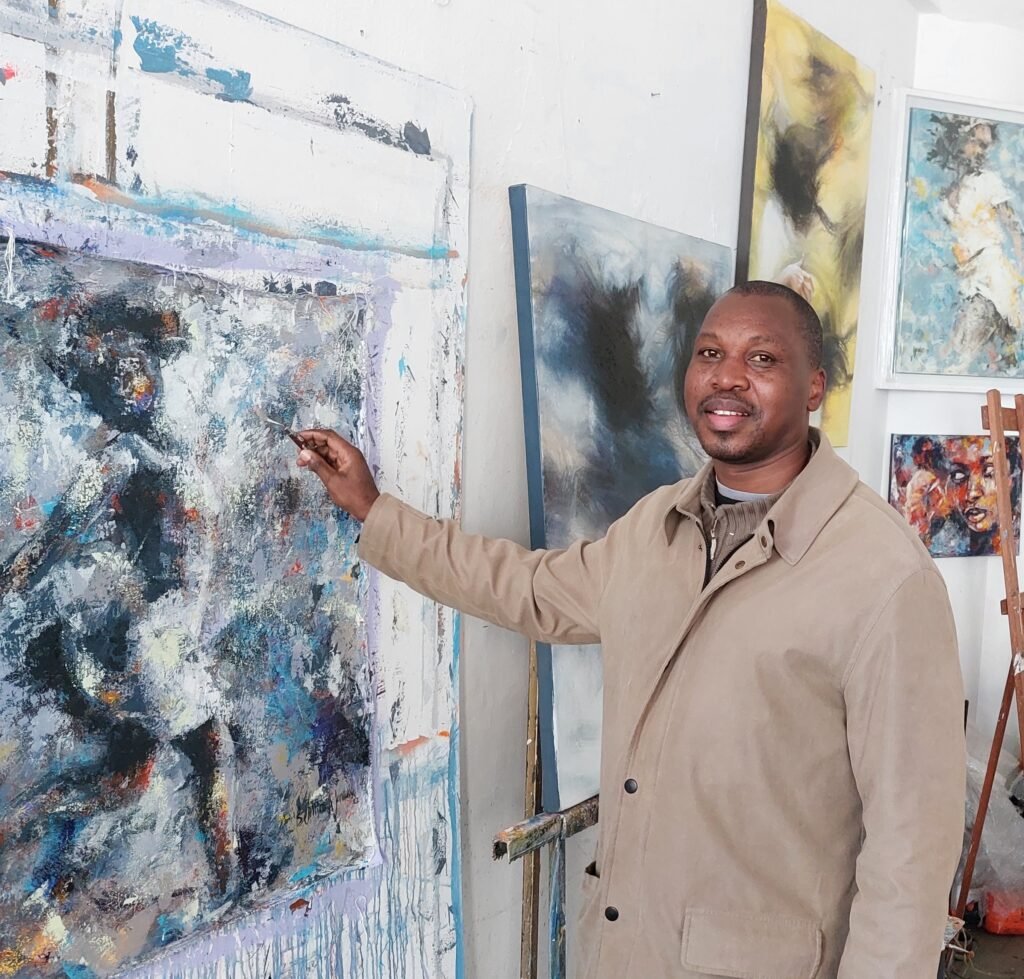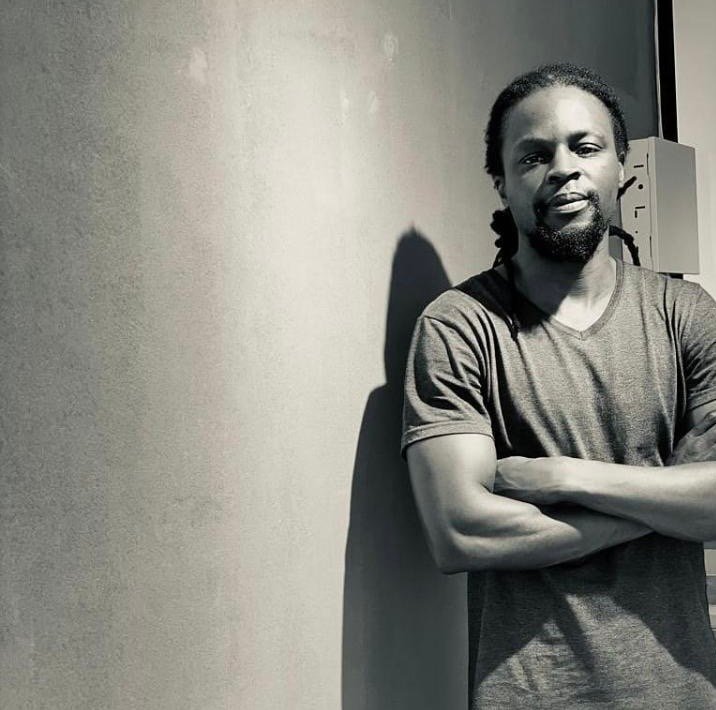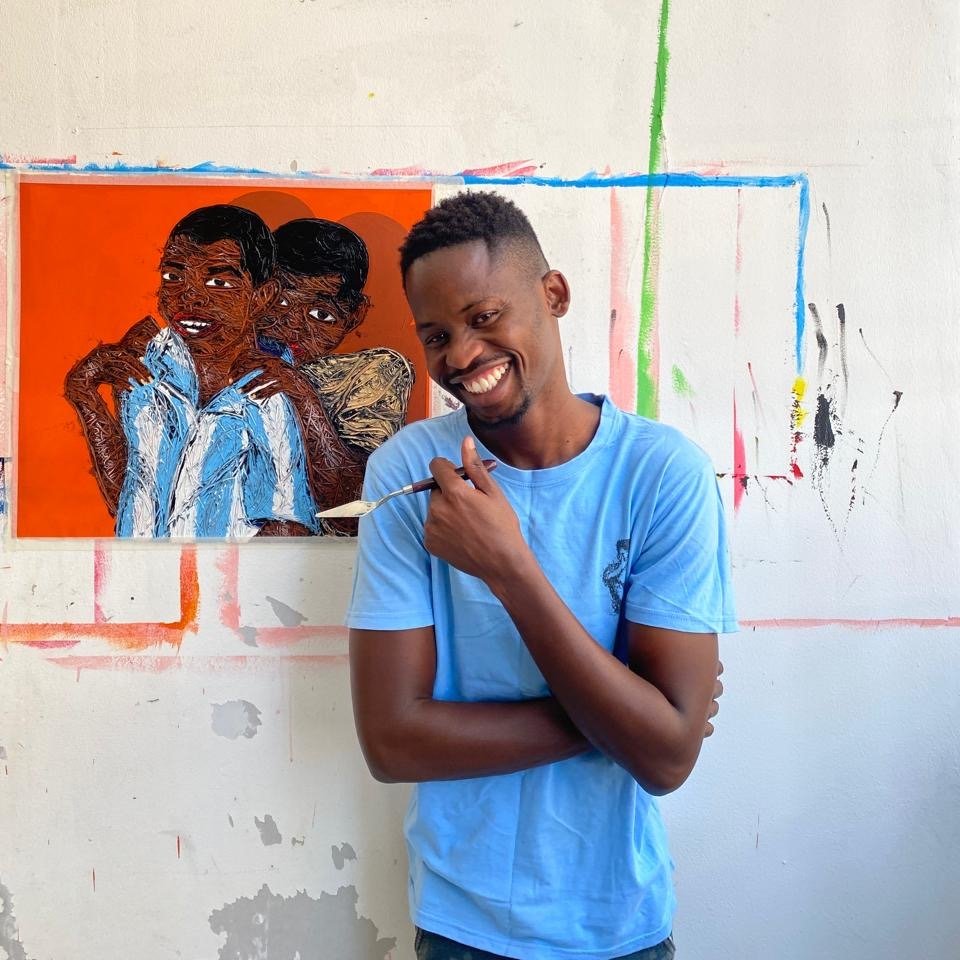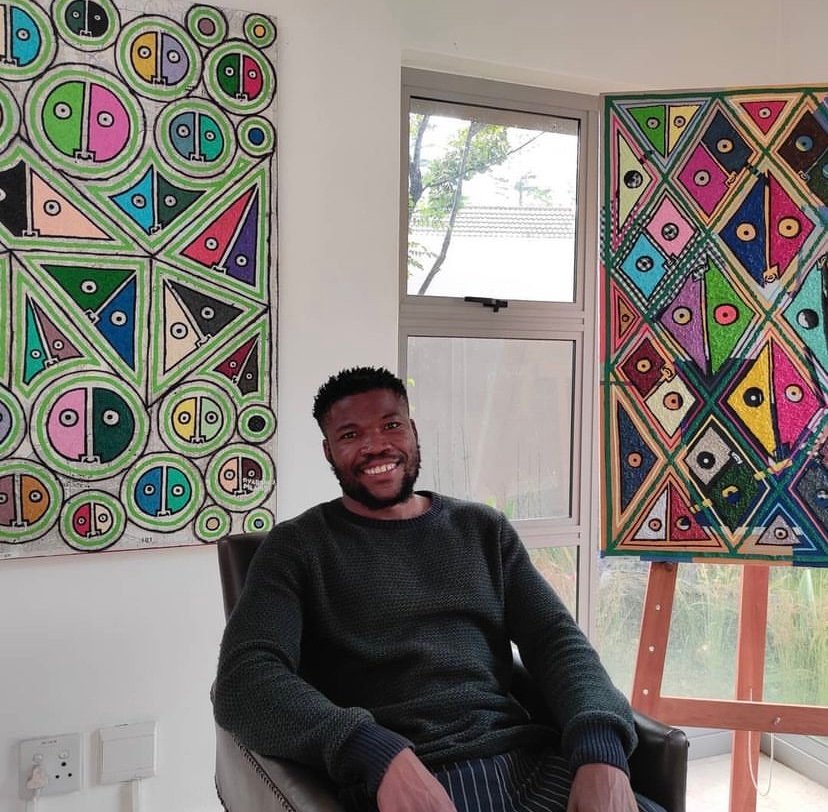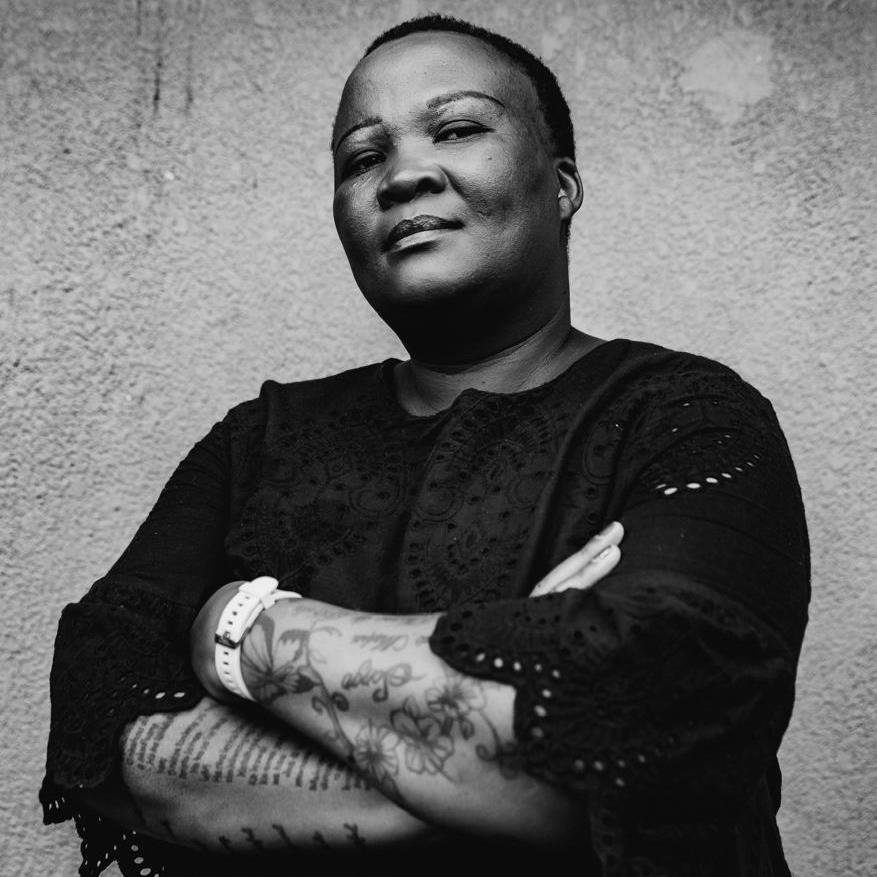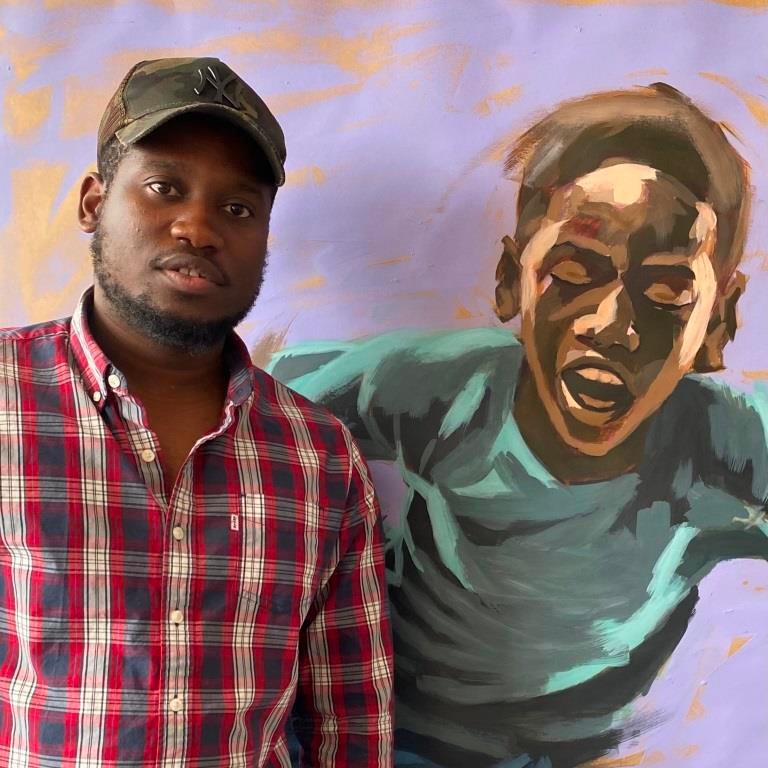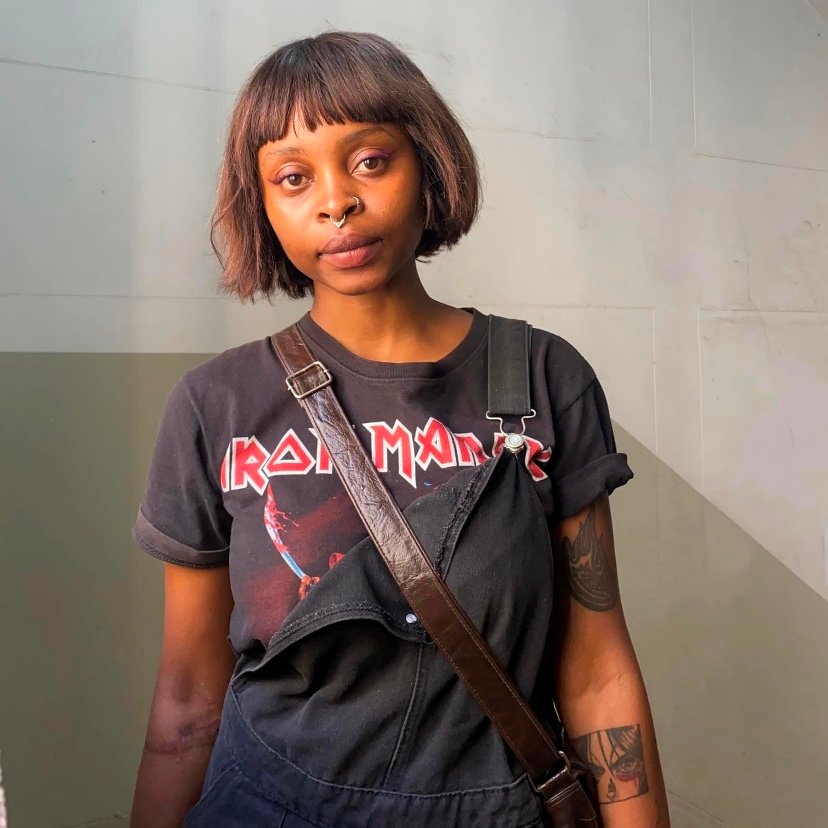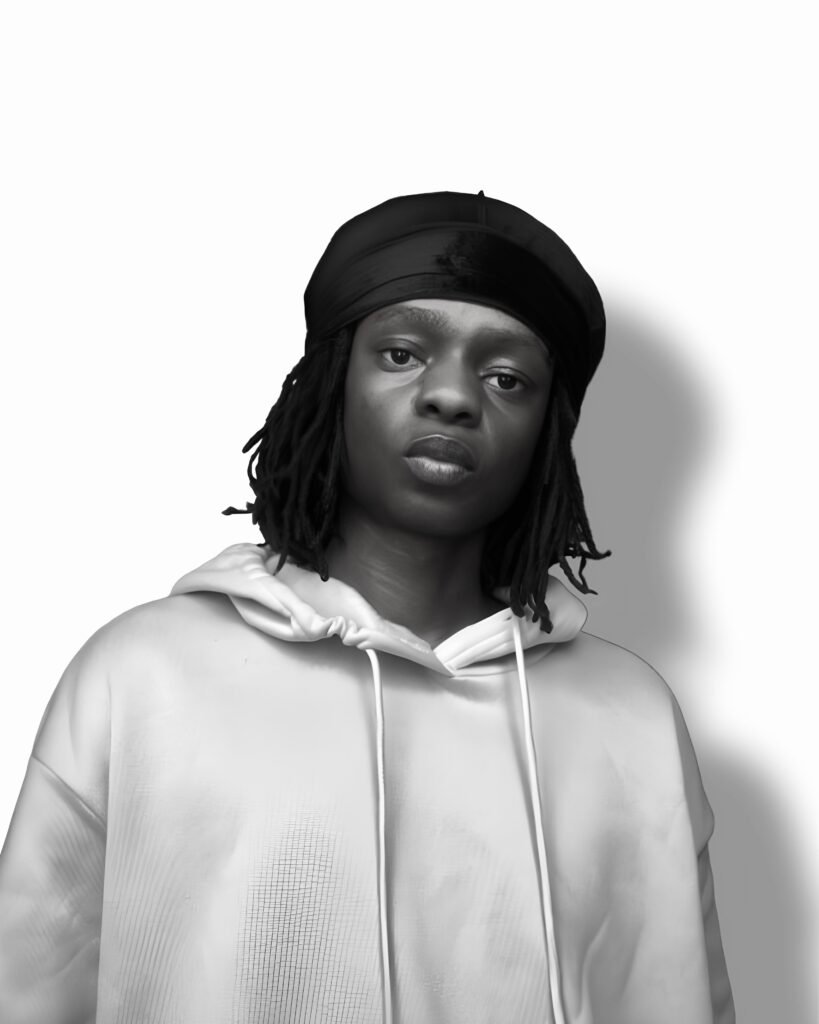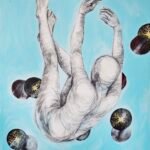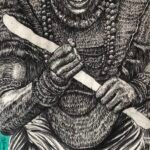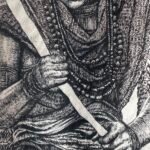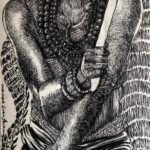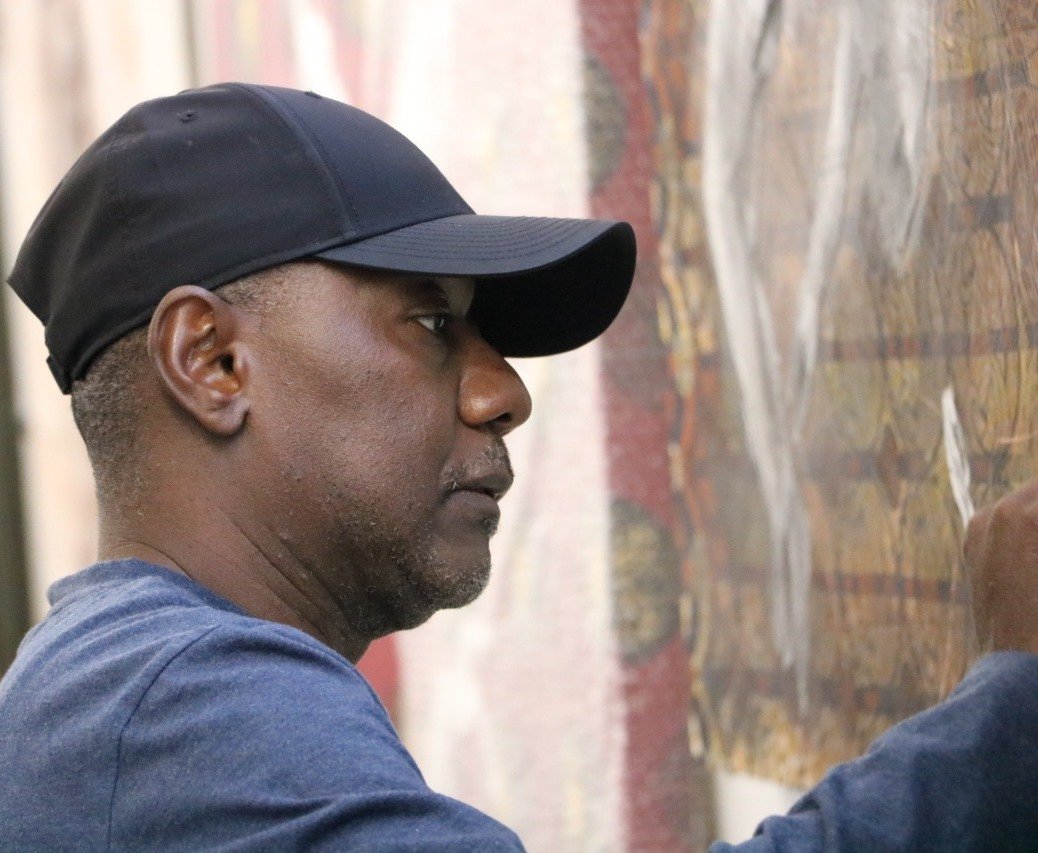
Joao Ladeira
On Auction
Joao Ladeira is a contemporary artist whose practice delves deeply into the socio-political, economic, and humanitarian crises that define today’s world. His work is particularly focused on the issue of migration, a theme that resonates profoundly with the global challenges faced by displaced individuals, especially from the African continent. Born in Angola and based in Johannesburg, South Africa since 1992, Ladeira’s art speaks to the pressing realities of human displacement, shedding light on the tragic consequences of the ongoing migration crisis.
Early Beginnings and Educational Journey
Ladeira’s journey as an artist began at a young age when his father, recognizing his natural talent for drawing, enrolled him part-time at an Academy for Fine Arts Initiation. It was there that he began honing his artistic skills and fostering a deeper connection to the visual arts. His father’s encouragement and support played a key role in shaping Ladeira’s future path, providing him with the foundation to pursue art with a sense of purpose.
Following this early exposure to art, Ladeira continued his studies, graduating with a master’s degree in fine arts from the University of Johannesburg in 2005. This formal education further refined his understanding of artistic practice, pushing him to explore more complex and relevant themes in his work. It was during his academic journey that he began to develop a keen interest in contemporary art and its ability to engage with real-world issues.
Influences and Artistic Inspiration
Throughout his career, Ladeira has been influenced by a diverse array of contemporary artists, particularly those whose work engages with identity, culture, and political issues. British Nigerian artist Yinka Shonibare and African American artist Kara Walker are two key figures whose works have left a lasting impact on Ladeira’s own practice.
Yinka Shonibare’s exploration of cultural identity, especially by Dutch wax fabrics, resonated deeply with Ladeira. Shonibare’s ability to use materials and symbolism to critique colonialism and examine the complexities of African identity has been a major source of inspiration. Similarly, Kara Walker’s powerful storytelling, which often explores the themes of race, power, and violence, has influenced Ladeira’s approach to dealing with sensitive socio-political themes in his own work.
Beyond these artists, Ladeira is also inspired by the broader cultural, historical, and political contexts of his own life. The ongoing migration crisis, especially the perilous journeys undertaken by African migrants in search of a better life in Europe, is a theme that drives much of his creative output. His work becomes a platform to comment on the human suffering and the inequalities that lead to such migrations.
Themes of Migration and Socio-Political Crisis
One of the central themes in Ladeira’s work is the migration crisis, particularly the tragic plight of young African migrants who attempt to cross the Mediterranean Sea in search of better opportunities. Ladeira poignantly captures the human cost of migration—the lives lost in overcrowded, unsafe boats, the uncertainty of these perilous journeys, and the broader socio-political factors that contribute to mass displacement.
In his work, Ladeira critiques not only the conditions that force people to flee their homes but also the apathy of the global community towards the suffering of migrants. He explains that his artwork seeks to “raise awareness of our own passivity to injustice, human suffering, violence, and neglect,” focusing on how society distances itself from the migrant crisis. By using art to evoke empathy, Ladeira challenges the viewer to confront their own biases and assumptions about migration and human suffering.
He also explores the notion of the migrant as the “Other,” someone who is seen as different, distant, and removed from “us.” In this sense, his work encourages viewers to reconsider the boundary between “us” and “them” and to see the humanity that unites people across borders. Ladeira emphasizes that, despite differences in nationality, culture, and background, we share common threads that make us all human.
Materials and Techniques: A Symbolic Approach
Ladeira’s choice of materials plays a crucial role in conveying the thematic depth of his work. He often uses a combination of drawing, collage, and painting on canvas, which allows him to explore different properties and dimensions within a single piece. This multimedia approach mirrors the complexities of migration, where people from different countries, cultures, and religions come together in a single, often dangerous journey.
One of the most striking aspects of Ladeira’s work is his use of brightly coloured Dutch wax fabrics. These fabrics, which are widely used in many African countries, have become a contemporary symbol of African identity. For Ladeira, the use of Dutch wax fabric serves multiple purposes. Not only does it add a playful element to the work, but it also pays homage to the role of African culture and identity in shaping global narratives. By incorporating this fabric into his installations, Ladeira draws a direct line between African identity and the broader narrative of migration, using fabric to “dress up” the canvas and bring attention to the human lives behind the crisis.
This playful use of fabric contrasts with the tragic and serious themes Ladeira addresses, such as the lives lost in the Mediterranean. It reflects the dual nature of the migration crisis: while it is a deadly and dangerous endeavour, there are also human stories, dreams, and hopes intertwined with the journey. The fabric serves as a metaphor for the “playground” created by politicians and smugglers who profit from the suffering and exploitation of migrants.
The Role of Art in Raising Awareness
Ladeira views his art as a means to engage with the world and raise awareness about the injustices that often go unnoticed or ignored. His works are intended to shake the viewer from complacency and confront them with uncomfortable truths about the global migration crisis. Through his art, Ladeira seeks to challenge viewers to take responsibility for the world they inhabit and recognize the urgency of addressing the causes of migration, displacement, and human suffering.
Ladeira envisions a future in which his work reaches an even broader audience, particularly through international art fairs, exhibitions, and collaborations. By sharing his message on a larger stage, he hopes to raise greater awareness of the challenges facing young African migrants and the importance of global solidarity in addressing issues of displacement. He aims for his art to inspire action, empathy, and a deeper understanding of the global human experience.
Conclusion: A Vision for the Future
As an artist, Joao Ladeira is committed to creating works that retain the warmth of the human touch while also addressing the urgent issues of our time. His art is not just about aesthetics, but about making a statement and engaging with social issues that affect millions of people worldwide. Through his exploration of migration, identity, and the human cost of socio-political and economic instability, Ladeira is using art as a powerful tool for advocacy and change.
Looking ahead, Ladeira’s work promises to continue evolving, reflecting the ongoing global migration crisis and the need for collective action. As his practice grows, he hopes to bring attention to the voices of displaced people and to contribute to a broader conversation about the responsibilities we all share in making the world a more just and humane place.

